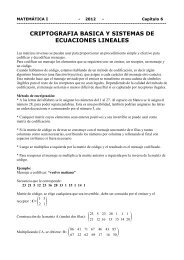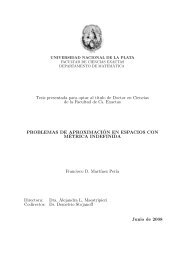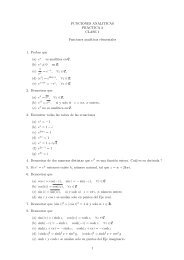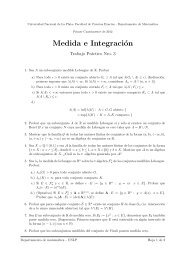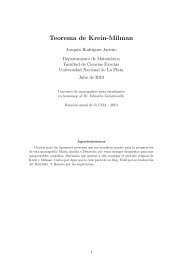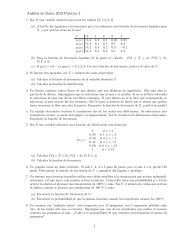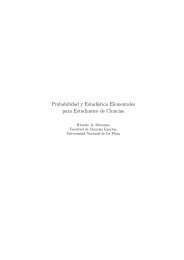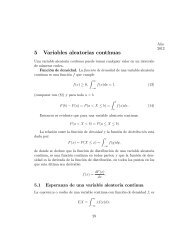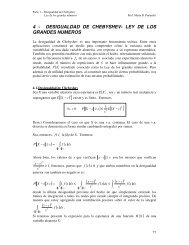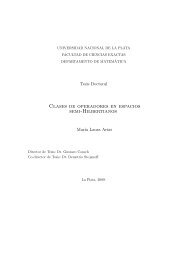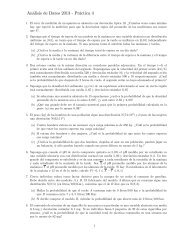Fases geométricas en sistemas mecánicos - Departamento de ...
Fases geométricas en sistemas mecánicos - Departamento de ...
Fases geométricas en sistemas mecánicos - Departamento de ...
You also want an ePaper? Increase the reach of your titles
YUMPU automatically turns print PDFs into web optimized ePapers that Google loves.
Abstract<br />
Geometric phases in mechanical systems<br />
by<br />
Alejandro Cabrera<br />
Doctor of Sci<strong>en</strong>ce in Mathematics<br />
Universidad Nacional <strong>de</strong> La Plata<br />
Profesor Jorge Solomin, Advisor<br />
This thesis is <strong>de</strong>dicated to the study of geometric phases in classical and quantum<br />
mechanical systems.<br />
First, we study the motion of self <strong>de</strong>forming bodies with non zero angular mo-<br />
m<strong>en</strong>tum wh<strong>en</strong> the changing shape is known as a function of time. The conserved angular<br />
mom<strong>en</strong>tum with respect to the c<strong>en</strong>ter of mass, wh<strong>en</strong> se<strong>en</strong> from a rotating frame, <strong>de</strong>scribes<br />
a curve on a sphere as it happ<strong>en</strong>s for the rigid body motion, though obeying a more com-<br />
plicated non-autonomous equation. We observe that if, after time ∆T , this curve is simple<br />
and closed, the <strong>de</strong>forming body ´s ori<strong>en</strong>tation in space is fully characterized by an angle or<br />
phase θM. We also give a reconstruction formula for this angle which g<strong>en</strong>eralizes R. Mont-<br />
gomery´s well known formula for the rigid body phase. We also apply these techniques to<br />
obtain analytical results on the motion of <strong>de</strong>forming bodies in some concrete examples.<br />
The main chapter of this thesis consists of a <strong>de</strong>tailed study of mechanical systems<br />
g<strong>en</strong>eralizing the <strong>de</strong>forming body case. The configuration space is assumed to be Q −→ Q/G<br />
for which the base Q/G variables are being controlled. The overall system´s motion is<br />
consi<strong>de</strong>red to be induced from the base one due to the pres<strong>en</strong>ce of g<strong>en</strong>eral non-holonomic<br />
constraints. It is shown that the solution can be factorized into dynamical and geometrical<br />
parts. Moreover, un<strong>de</strong>r favorable kinematical circumstances, the dynamical part admits a<br />
further factorization since it can be reconstructed from an intermediate (body) mom<strong>en</strong>tum<br />
solution, yielding a reconstruction phase formula. At the <strong>en</strong>d of this chapter, we apply this<br />
results to the study of concrete mechanical systems.<br />
The last chapter is a short account on the id<strong>en</strong>tification and construction of the<br />
3



